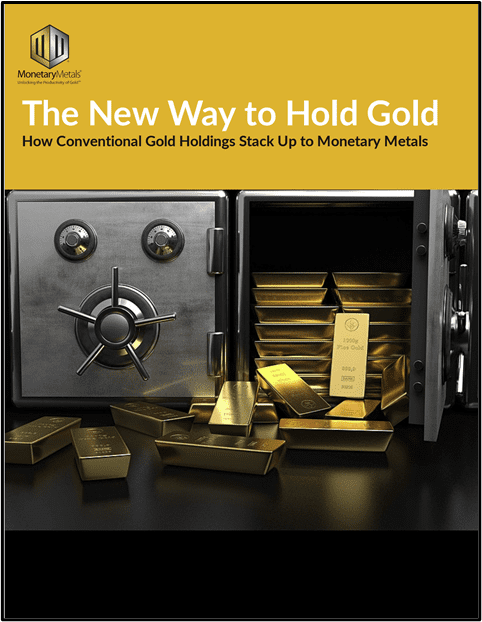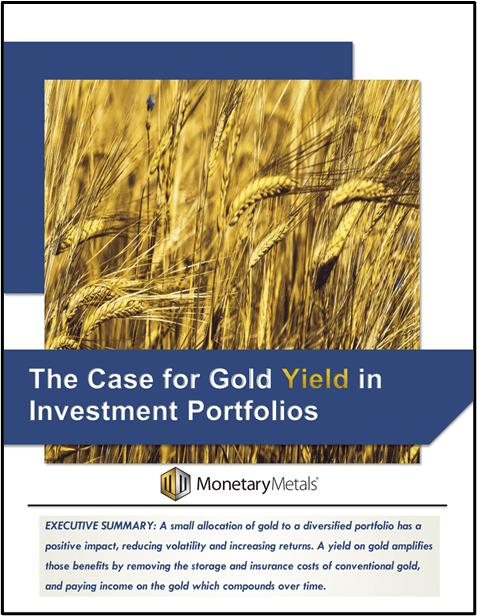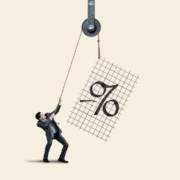Jeffrey Christian: Silver’s Potential Upside?
Jeffrey Christian is the Founder and Managing Partner of CPM Group, one of the world’s leading commodities research and consulting firms. With over 40 years of experience, he’s an expert on precious metals and economics and joins the podcast to discuss the potential upside silver could see in 2024 and beyond.
Follow Monetary Metals on X: @Monetary_Metals
Additional Resources
The Real Reasons To Invest In Silver Now
Earn 12% in our Silver Bond offering
Earn Interest on Gold and Silver
How to Earn Passive Income in Gold and Silver
Podcast Chapters
00:00 – Silver Investment Demand and Price Projections
00:29 – Introduction to the Gold Exchange Podcast
01:09 – Why Own Both Gold and Silver?
03:00 – Silver’s Industrial Demand and Price Volatility
05:22 – Historical Context of Silver Prices and Industrial Use
09:08 – Silver’s Investment Demand Impact on Prices
12:23 – Potential Upside in Silver Investment Demand
17:13 – Earn 12% on Silver with Monetary Metals
18:08 – Lightning Round: Metals and Market Predictions
27:03 – Addressing Misinformation in Financial Markets
Transcript
Ben Nadelstein:
Welcome back to the Gold Exchange podcast. My name is Ben Nadelstein with Monetary Metals. I am joined by Jeffrey Christian. Jeffrey Christian is the founder and managing partner of CPM Group, one of the world’s leading commodities, research, and consulting firms. With over 40 years of experience, he’s an expert on precious metals and economics, and he’s joining us today to discuss gold, silver, and how to make sense of financial markets. Jeffrey, welcome to the show.
Jeffrey Christian:
Oh, thank you. Thank you for having me. Excuse my sound. Well, seasonal head cold.
Ben Nadelstein:
Don’t worry at all. The knowledge is always there regardless of the cold. So for a lot of people, they own gold. And the first question they might ask is, I already own gold. Is there actually a reason for me to own silver? Gold and silver, man, that’s the exact same thing, right? If I own gold, do I really need silver? And maybe vice versa. They say, I already own some silver. Do I really need to add some gold? So what does the data say? Is there actually some portfolio benefit to having both silver and gold in your portfolio?
Jeffrey Christian:
Okay, well, about an 80 % correlation between gold and silver prices over time. Silver is a good surrogate for gold, and it’s a good complement for gold for a couple of reasons. One is anytime you diversify your assets, so you have a alternative asset portfolio, which is 100% gold, and that’s good. It’s wholly dependent on gold prices. If you add silver and you put 20% of that in silver, then you reduce the month-to-month volatility in that asset’s value. That’s a good thing. The other thing is that silver prices, because the silver market is so small compared to gold, it’s like 10% dollar size of gold. You talked about gold’s liquid liquidity being a big positive. Silver doesn’t have that liquidity. And the small size, the lack of liquidity makes it much more volatile. So if the gold price is rising, you tend to see the silver price outpacing. So it’s a good complement to gold in your portfolio. But you have to understand that that outsized price volatility also affects the downside.
Ben Nadelstein:
And on that downside and upside front, I’ve heard one argument, which is there’s a lot of potential upside for silver going forward. We’ve seen the gold price move up. Obviously, gold and silver have a pretty strong correlation there. But they’ve mentioned that not only is there upside potential for silver, but the downside risk has been slightly more mitigated by some industrial demand factors, whether that is solar panels or AI chips or a thousand other things that silver is being used for as an industrial metal. Do you think that argument holds water that there’s almost a stronger floor for the silver price, but a higher upside, or is that just a pundit father?
Jeffrey Christian:
A Greenspan put on silver. No, I don’t think that that’s actually wholly valid. The fact that the majority of silver gets used in fabricated products is a positive for silver because, again, it’s that diversification. You have gold where you have A significant portion of the gold, maybe 40% this year, going into investment demand. With silver, it’s maybe 60 million ounces. It’s like 6%. You have the vast majority of silver being used in a whole range of industrial products. A lot of people have been focusing on solar panels. There’s also been people who have been promoting the idea that silver is used in massive volumes in military missiles. It’s not. And in other applications. But if you look at it, if you look at the data historically, silver’s industrial base has helped silver prices, but it hasn’t necessarily kept them from falling. You had this very large industrial base in silver in the ’70s and in the ’80s, and it didn’t necessarily help the silver price support. Silver, when it spiked up to $50 in 1980, it drifted back down to $3.5 around 1990. And it traded between $3.5 and $5.5 for 15 years. During that time, industrial demand rose very sharply for silver for good reasons.
The price was low. There’s no price constraint on using silver. And if somebody said, Well, we can use silver contacts, we can use gold contacts, we’re going to use the silver contact. Or if we’re going to use silver or palladiumium, we’re going to use palladiumium-plated silver. Silver was the low-cost precious metals for a lot of applications. It’s good that it has that base, but it’s really… We just did this report called The Real Reasons to Own Silver Now. We made the point that if you look at the sharp increases in silver prices, 1960s, 1979 into 1980, 2000s. It’s always been a surge in investment demand that drives the price of silver higher. Now, those investors, in large part, are reacting to the same economic and financial market and political uncertainties that gold investors are reacting to. But they also, in history, have reacted to the fact that silver has this industrial base, which gives it some added stability, even if the stability is not actual and real. So there’s a perception Well, silver has got this industrial base, and usually those political, economic, and financial crises occur in the late stages of an economic expansion.
And at that point, fabrication demand has been rising because the industrial economy has been increasing. People have been buying more electronics that contain silver. They’ve been installing more silver panels. They’ve been loading up their cars with electronics, and they’ve been taking disposable income and buying jewelry and silverware and other things that have silver in them. Silver fabrication demand tends to be strong and rise strongly in the late stages of aneconomic expansion, and that turns investors on even more towards silver. They’ll say, Oh, wow. Yeah, it’s rising sharply. And then the promoters come in, they take that kernel of truth, and they blow all out of proportion. Silver is used in missile batteries and in torpedo batteries, and it’s a couple ounces. It’s not pounds. It’s not half a ton in those batteries. Frankly, most torpedo batteries get recycled and recovered because I don’t know the last time we used a torpedo in a military operation. Solar power, yeah, the demand for silver is rising. It’s probably going to continue to rise. But there are structural issues in the solar panel industry that you have to pay attention to that are causing people in the solar power industry and in government agencies that look into solar power to be much more cautious about future growth trends in solar panel manufacturing.
Ben Nadelstein:
So someone listening to your response might say, Okay, it might not be true that this industrial demand perception is as accurate as I previously thought. So that actually sounds pretty bearish on the price of silver. But is that actually how you feel? Do you think that there’s actually in the next short term price period a problem for silver prices? Or do you actually see a little bit more of a bullish story for silver going forward?
Jeffrey Christian:
Fabricators use silver as a raw material as part of their materials that they use in making their products. They want to reduce their amount of silver always. And when the price rises, they look for ways to reduce their silver use. So fabrication demand is negatively correlated. It has a negative elasticity to the price. Investors, unfortunately for them, tend to chase the price higher. So investment demand tends to have a positive correlation with the price. That’s the effect of the differences of the two. And what you really want to know, if you want to know what fabrication demand is relative to total supply, you don’t want to throw in dummy variables for investment demand and say, Oh, my God, the silver market’s in this massive deficit. You want to say, I’ve got a billion ounces of silvermine production and 990 million ounces of fabrication demand. So there’s like a 60 million ounce deficit or surplus. That tells It means that the silver market is tight on a fundamental or a real demand basis. Fabrication demand is up there, close to total, newly refined supply entering the market. That’s a bullish story. That’s not as bullish as, Oh, there’s hundreds of millions of ounces of phantasmagorical imaginary deficits.
But that’s a bullish thing. If you look at fabrication demand’s effect on prices and investment demand’s effect on prices. Investment demand is far more powerful in driving silver prices up and down than its fabrication demand. Now, It’s the nature of the beast. You have a relatively small market, a billion ounces of silver at today’s price of $34 billion an ounce. You got $34 billion silver market, and you have of billions of dollars in the investment market globally that’s saying, Gee, I’m exposed to very high stock prices and an uncertain currency market, and bond prices have been rising now because the interest rates are falling. I’m not sure how much more they’re going to fall. Where am I going to put my money? You have this enormous pool of investment funds that are theoretically available to silver. Most of it never comes in the silver. The amount of money that investors have invested in silver as part of their investable funds, it’s far less than 1%. It’s a fraction of 1%. But just a little If a trickle of that comes into the silver market, it has a very high powering thing. If you’ve got investment demand of around 66 million ounces this year, our current estimate, and if you see it go over 120 million ounces next year, which is our projection, you’re going to see a very powerful upward move in silver prices.
Fabrication demand will have an effect on it unless we go into a recession, which is possible, and we’d say probable. But the real kicker is going to be investment to be on levels.
Ben Nadelstein:
Final question here on silver. It’s been a very interesting discussion. Where do you see demonetization of silver? And what I would mean by that is the difference between people holding, let’s say, silver coins or silver bar because they think, Oh, this has some monetary insurance that I’d like to hold, versus people People saying, Hey, listen, I just really need silver to make this whatever piece of jewelry or this industrial supply product. Where do you see that ebb and flow between, Okay, people are holding silver bars as a monetary asset versus its industrial demand?
Jeffrey Christian:
We differentiate between monetary and financial demand. And private investors is financial demand. And those bars and coins, like I said, that’s the big big price drive there. And you have an enormous stack of silver held primarily by investors in bars and in coins and in silver ETFs around the world. I actually keep this on my desk. This is a silver certificate. This was monetary use of silver. It’s from 1957. Ike signed it. 1957, it was a $1 bill in circulation, and it was backed by one ounce of silver. That’s a monetary use of silver. Silver was demonetized in the ’60s in the United States, in the late ’70s, early ’80s, in Europe, in Japan, and other countries, because the price was just too volatile, and it didn’t jive with what was going on in economies at the time. But it’s that financial demand, and that’s really the important part. It’s also the most secretive part because investors don’t want to say, This is how much silver I have. There are no laws and regulations that say they have to divulge it unless they’re a publicly listed investment fund. When Berkshire Hathaway bought its silver in 1997, it had to report.
It could delay that reporting under SEC regulations, but at a certain point, it had to, in its quarterly filings, by April of ’98, they had to say, Oh, yeah, we bought 129.7 million ounces of silver.
Ben Nadelstein:
So the case for demonetization, we should be looking at maybe financial demand for silver versus industrial demand. And do you see there being a flip at some point where the industrial demand overtakes financial demand, where people who have financial silver decide to sell it to a fabricator? Or do you think it’s going to likely be the other way around where fabricators are priced out because of investor demand?
Jeffrey Christian:
Well, you did see a 15-year period from 1990 to 2005, where investors were net sellers of more than a billion ounces of silver, like one and a half billion ounces or so. And a lot of that silver went into fabricated products. So You can see that it’s not a matter of fabrication demand overtaking investment demand. It’s not a matter of, Oh, my God, the solar panel industry needs so much silver that they’re squeezing the investors out. That won’t happen because the silver investors have this enormous tranche of money, and they’re much more adept at investing than our fabricating companies. If you saw fabrication demand it growed to the point where it was actually pinching the available supply, investors would pour into the market. That’s what happened in 1978, ’79. It’s what happened time and time again. Investors are much more facile, and they’re on top of that. If they see that fabrication demand is growing in its use of silver to the point where it could have a or a much more significant effect on the price, investors will jump in front of it.
Ben Nadelstein:
A master class for silver. Now, Jeff, I want to take us to a lightning round. What I’m going to do is I’ll ask you a series of quick questions. You can answer if you want with one word, you can answer with thumbs up or thumbs down, or you can go on a long diatribe on any of the questions that you feel are interesting.
Jeffrey Christian:
I was going to say, if you can get me to answer something briefly, congratulations.
Ben Nadelstein:
I’ll be the first to win that award. Okay, let’s start with our lightning round. So which do you think has a brighter future going forward in its price in the short to medium term? These are not precious metals, copper or lithium?
Jeffrey Christian:
Copper on a short and intermediate term basis.
Ben Nadelstein:
Anyone interested? They’re going to have to read more of Jeffrey Christian’s work. Next one, which will have a better end to 2024? Gold or silver?
Jeffrey Christian:
I think silver will outpace gold for the rest of the fourth quarter and probably through the first quarter of next year, if that’s your next question. I think silver outpaces gold on the basis of the next two and a half months.
Ben Nadelstein:
Next lightning round question, is the 60/40 portfolio style dead, or is it still relevant for investors going forward?
Jeffrey Christian:
I’d like to think that it’s dead, but it’s very relevant for using as a basis of backtesting various investment theories and applications. We use a 50/50 portfolio in our allocation. We’ll say 50% S&P, 50% T-bills, and then let’s start adding 5% increments of gold or silver or copper or whatever we’re measuring. We did that and we came up with some really powerful results, 2017 2018. Various promotional groups said, Well, we don’t like CPM, so we’re not going to repeat, replicate their work. And they went off and they did this other stuff. They hired economists as opposed commodities people. And they said, Write me a report about the positive effects of diversifying into gold and in silver. And they came up with their own models, not the 60/40, not the 50/50, but came up with their own proprietary models. And institutional investors get these reports and they say, I don’t care what this means to his proprietary model. I want to know what it means in a 60/40 or a 50/50 portfolio. I’d like I think that institutional investment managers and private individuals, individual investors, are more savvy and understand that the 60/40 is just a model.
It’s like you go into a store to buy kitchen cabinets and they go, Well, here’s the floor model. Now, let’s customize it. I think it’s very important to have that floor model so that everybody’s talking about the same thing. When you start saying, Well, I’m using my own proprietary proprietary model and it shows X, people say, Well, that’s really nice. Who cares what your proprietary model says? I want to know on the basis of what everybody’s looking at, what does it say?
Ben Nadelstein:
Next lightning round question for you. What investing book is one that you would recommend but is almost never read?
Jeffrey Christian:
That’s hard. Well, the Madness of Crowds is Obviously a big one. My own book, Commodities Rising, it was a best seller when it came out in 2005, 2006. A little bit dated, but it’s still very good. One of the reasons we wrote it was because in 2005, when Wiley came to me and asked me to write it, I had been in this business for, I have to do the math, 30 years. For 30 years, people have said, What’s a good book to read about investing in commodities? And I always said, There isn’t one. So it’s tough. Marcia Stigham, years ago, had a book on investing in bonds, two books, and I kept those. I still have them on the shelf someplace. Fabozzi did a… He edited a big book that we participated. We provided a couple of chapters on investing, not investing in commodities, but investing across assets. That’s a really good book, but it’s like a thousand pages or so, but it’s a very good book to read.
Ben Nadelstein:
Well, I’m sure there’s some in our audience who would be happy to read that a thousand-page book. And if you do, please let us know in the comments. Okay, next lightning round question. Do you think a soft landing will actually happen, or will the pundits be proven wrong?
Jeffrey Christian:
I don’t necessarily believe in a soft landing, although to some extent we’re experiencing one. That’s like somebody in LA saying, I don’t believe in earthquakes. Here, hold my glass. But I think that we will have a recession. Our expectation has been for some time that it would emerge in the final quarter of 2024 or over the course of 2025. I still think that that probably is the most likely time frame, but I do think that within the next two and a half years, we will see a recession.
Ben Nadelstein:
What is a myth that you would like debunked for good?
Jeffrey Christian:
The current one that’s going around, and I’m not sure when you’re going to air this, but we’re talking on Monday the 21st, on Tuesday the 22nd, the bricks meet. And there’s all this garbage about the bricks are going to move to a gold-related currency. And the BRICs have no interest in doing it. Vladimir Putin wants that. The Central Bank of Russia is not interested in it. China, India, Brazil, South Africa. Am I missing any? I don’t think so. None of them wanted. And I heard some, wasn’t a pun good, commentator on Kitgo saying how all the BRICs, Central Banks, are buying gold. Well, South Africa and Brazil not buying gold. They have very little gold, and they’re not interested in buying gold. India has bought a little bit of gold. China started buying gold when the price got down to 1640. They had stopped in the middle of 2019. They didn’t buy any gold from the middle of 2019 until November 2022. When the price went from 2040 in April of 2022 to 1640 in November 2022, they They started buying again. They bought pretty much every month from domestic production and stockpiles, still gold that had been sold by people in China over the course of 2022.
They bought from November of 2022 into about April or May of this year. When the price started rising above 2,200, they stopped buying. I think the idea that the bricks are buying gold and that you’re going to a bricks-backed currency, that’s one myth. And then related to that, I guess, is just this general idea that central banks are racing into gold. They’re buying gold and they see it as a significant monetary reserve asset, but They’re not necessarily racing into goals.
Ben Nadelstein:
Final lightning round question. What is a question I should be asking all future guests?
Jeffrey Christian:
Well, I don’t know the answer to it, but maybe one of your future guests does. How do we get out of this situation that we’re in with so much misinformation and disinformation flooding not only the precious metals market, but total financial markets, the overall economy and the political system, social issues. I mean, it’s a societal problem where it’s hard for somebody whose job it is to work 90 hours a week trying to parse misinformation from good information. It’s virtually impossible for the average person to hear a story and say, Well, that’s hogwash. I don’t know how we get out of where we are today. We’ve been in this place before, but I’m not quite sure how we get out of this back to a place of more discussions.
Ben Nadelstein:
Well, I know one place to start is having more Jeffrey Christian on the Gold Exchange podcast. Jeffrey, where can people find more of your work if they’re interested?
Jeffrey Christian:
Well, cpmgroup.com is our website. You can go to YouTube. We post free videos twice a week, typically twice a week, Tuesdays and Fridays. We have a variety of research and consulting services that you can read about at our website, cpmgroup. Com. You can send us an email at info@cpmgroup. Com saying, How can you help me?
Ben Nadelstein:
Jeffrey Christian, CPM Group. It’s been an honor interviewing you, and we look forward to seeing more of your work. Thanks so much.
Jeffrey Christian:
Thank you for having me.
Additional Resources for Earning Interest in Gold
If you’d like to learn more about how to earn interest on gold with Monetary Metals, check out the following resources:
In this paper, we look at how conventional gold holdings stack up to Monetary Metals Investments, which offer a Yield on Gold, Paid in Gold®. We compare retail coins, vault storage, the popular ETF – GLD, and mining stocks against Monetary Metals’ True Gold Leases.
The Case for Gold Yield in Investment Portfolios
Adding gold to a diversified portfolio of assets reduces volatility and increases returns. But how much and what about the ongoing costs? What changes when gold pays a yield? This paper answers those questions using data going back to 1972.













Leave a Reply
Want to join the discussion?Feel free to contribute!